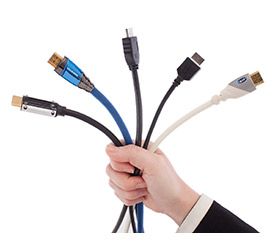square_wave
Well-Known Member
Hello gents, I came across the eARC feature while in the market to pick a simple av reciever. I already knew about ARC.
-----------------------------
eARC :
"The main benefit of eARC is a big boost in bandwidth and speed. This allows you to send higher-quality audio from your TV to a soundbar or AV receiver.
There’s scope for eARC to deliver up to 32 channels of audio, including eight-channel, 24bit/192kHz uncompressed data streams at speeds of up to 38Mbps.
This means all those high bitrate formats currently available on Blu-ray discs, 4K Blu-rays and some streaming services – Dolby TrueHD, DTS-HD Master Audio and object-based formats such as Dolby Atmos and DTS:X – will all be compatible."
-----------------------------
Apparently this is a new tech that allows very high bandwidth 2 way communication between your tv and av receiver if you connect your source to the TV instead of the av reciever.
I tend to connect all my devices to the av reciever. The only thing that will come via the tv are the ones that I access via the smart apps in the tv. Netflix, Amz prime and all that. In that case, is this feature important ? Do streaming services use any of the above mentioned high bandwidth tech ? Today or in the near future ?
-----------------------------
eARC :
"The main benefit of eARC is a big boost in bandwidth and speed. This allows you to send higher-quality audio from your TV to a soundbar or AV receiver.
There’s scope for eARC to deliver up to 32 channels of audio, including eight-channel, 24bit/192kHz uncompressed data streams at speeds of up to 38Mbps.
This means all those high bitrate formats currently available on Blu-ray discs, 4K Blu-rays and some streaming services – Dolby TrueHD, DTS-HD Master Audio and object-based formats such as Dolby Atmos and DTS:X – will all be compatible."
-----------------------------
Apparently this is a new tech that allows very high bandwidth 2 way communication between your tv and av receiver if you connect your source to the TV instead of the av reciever.
I tend to connect all my devices to the av reciever. The only thing that will come via the tv are the ones that I access via the smart apps in the tv. Netflix, Amz prime and all that. In that case, is this feature important ? Do streaming services use any of the above mentioned high bandwidth tech ? Today or in the near future ?


